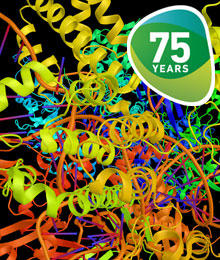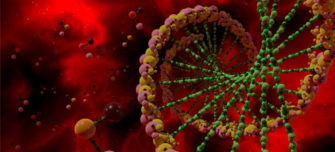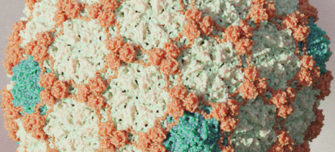The impact of CRISPR-Cas

What is CRISPR-Cas?
All organisms are exposed to parasites, so they evolved a range of different immune mechanisms to defend themselves. About 10 years ago, scientists discovered that bacteria and archaea, generally regarded as primitive organisms, have a sophisticated adaptive immune system, known as CRISPR-Cas (Clustered Regularly Interspaced Short Palindromic Repeats).
The discovery of the CRISPR-Cas system has led to a sea of change in the microbiological sciences. Since then laboratories all over the world have joined the race to understand and exploit CRISPR. The insights gained about this system led to applications in industry to protect bacterial species against their viral parasites. In addition, CRISPR-Cas has been turned into a versatile genome editing method that has the potential to treat human genetic diseases.
Why does CRISPR-Cas matter to microbiology?
Understanding how these systems work has been an important standalone basic science endeavour. More recently, harnessing CRISPR has opened the door to precision genome editing across all of life’s domains. These breakthroughs were recognised by the Nobel Committee who awarded the prize for chemistry to Emmanuelle Charpentier and Jennifer Doudna.
Read more about why understanding the mechanisms of CRISPR-Cas matters to our members and the wider microbiology community, access our additional resources, including how CRISPR-Cas could hold the solution to antimicrobial resistance, and continue to why the field of genetics matters to microbiology as we explore the world of phage.
-
Microbiologists working in this area
To celebrate our 75th anniversary in 2020, we invited microbiologists to nominate the discovery or event that best showcases why microbiology matters and helps us demonstrate the impact of microbiologists past, present and future. Learn more about the microbiologists who are studying the impact of CRISPR-Cas.
-
Resources and further reading
Access more information on CRISPR-Cas and microbiology, including tackling antimicrobial resistance the CRISPR-Cas way, archaea and CRISPR biology, and more about how researchers are looking to develop the next generation of CRISPR-Cas tools.
-
The world of phage
Phages are composed of proteins and a DNA or RNA genome that can be very simple, containing four genes, or complex, with hundreds of genes. With the emerging threat of antimicrobial resistance, alternatives to antibiotics are needed, hence, could phage therapy be considered a viable option?
Image credits:
iStock/CIPhotos





